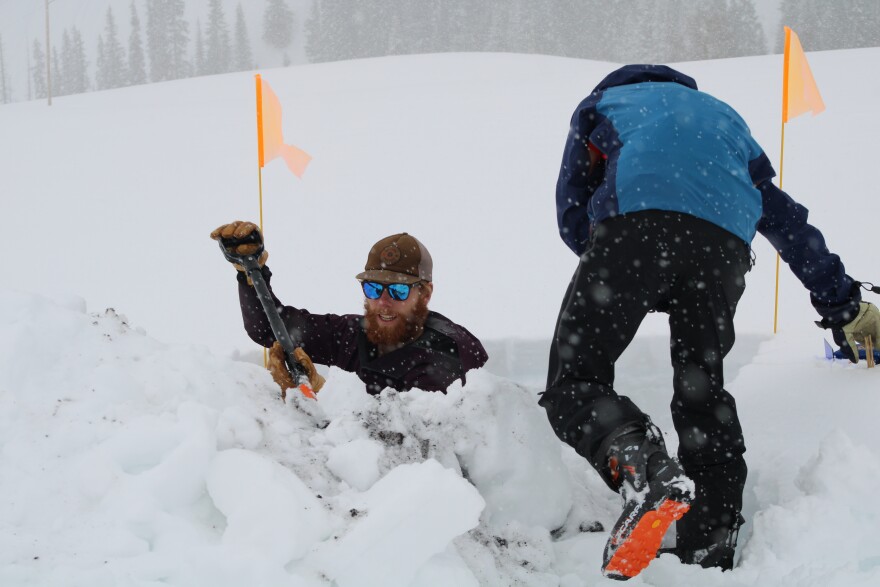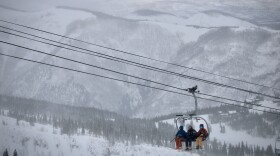A new study of high-mountain snow and rain suggests research should pay more attention to springtime conditions than scientists previously thought. The new data could help hone water supply forecasts for the streams that feed the Colorado River.
Researchers with the University of Washington initially set up a study near Crested Butte, Colo. to gather data about wintertime snow behavior. However, they found that weather and climate factors in warmer months had a noticeable impact on the amount of snowmelt that ended up flowing into streams and rivers.
“We thought it was about snow,” said Jessica Lundquist, a co-author of the study. “Really, when we looked at all the statistics across all the seasons, spring is the most dynamic season, and this tells us to change our focus to what's happening in the spring.”
Water forecasts for the Colorado River, which supplies about 40 million people across seven western states, are mostly focused on mountain snow. Eighty-five percent of the Colorado River starts as snow in the high-altitude mountains of Colorado and Wyoming.
As climate change and steady demand have shrunk the river’s supplies, scientists have worked to produce increasingly granular data about that mountain snow and how it melts. That gives water managers — sometimes in cities hundreds of miles away — a more accurate sense of how much water they can expect to flow their way each year.
In this case, spring is defined as March, April, and May. The factors that make those months so important are sunshine, plants, and rain.
If it’s sunny in the spring, plants are thirstier and soak up more snowmelt from the ground. If it’s cloudy and rainy, two things happen — plants are less thirsty and pull less water from the soil, and the water they do get is more likely to be recently fallen rain instead of snowmelt.
“If it's going to be sunny, the plants are going to say, 'Oh, I'm so happy. The snow just melted and I have a ton of water, so I'm going to grow like gangbusters,'” said Danny Hogan, the study’s other author. “This research really centers the importance of studying the whole snow season, not just when the snowpack is the deepest."

Hogan and Lundquist said this research, published in the journal Geophysical Research Letters, is important because it helps explain why streamflow has varied so greatly in recent decades. Since 2000, streamflow in the Colorado River basin has gone down by 19%. The new data shows springtime precipitation and water demand from plants account for about two-thirds of that change.
Warming temperatures in the 21st century have made it harder to predict the amount of water that ends up in the Colorado River each year. Previously, forecasts were mostly focused on the amount of snow in the mountains. But recent years have brought a growing gap between the amount of snow that falls and the amount of snowmelt that flows through streams, rivers, and reservoirs.
Scientists are only beginning to understand what is driving that gap.
Hogan and Lundquist originally set out to study another under-researched factor that influences the difference between snow totals and streamflow. At the research site near Crested Butte, they first studied snow sublimation — the process by which snow evaporates before it has a chance to melt.
For the winter of 2023-2024, models projected that 30% to 40% of snow would be lost to sublimation. The team found that about 10% of snow was actually lost to sublimation, less than models predicted. Those findings helped pave the way for the paper on spring conditions.
Other scientists have also been studying the influence of climate change on runoff. Much of that work has focused on soil moisture. Early findings indicate that warmer temperatures are causing drier soils, which soak up snowmelt before it has a chance to reach streams and rivers.
This story is part of ongoing coverage of the Colorado River, produced by KUNC and supported by the Walton Family Foundation. KUNC is solely responsible for its editorial coverage.







